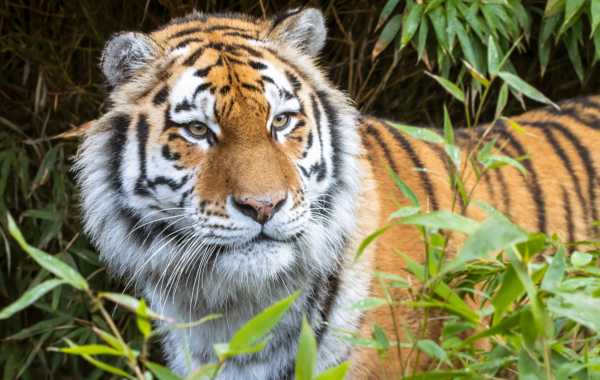Our Animal Companions: Understanding the Creatures We Share the Planet With

Animals have fascinated humanity since the beginning of time. From the loyal dogs curled at our feet to the wild lions roaming the savannah, animals capture our imagination, stir our emotions, and teach us about the world—and ourselves. Whether they fly, crawl, swim, or gallop, animals play a vital role in the balance of nature and enrich our lives in countless ways.

In a world dominated by technology and human activity, it’s easy to forget the importance of animals in our everyday lives. But take a moment to observe the birds singing outside your window, the bees buzzing around flowers, or your cat’s contented purr—and you’ll begin to see that animals are not only present, but essential.
This article is a tribute to the animals we share the Earth with. It’s about understanding their roles, appreciating their beauty, and considering what we can do to protect them—because the more we learn about animals, the more we understand how connected we all are.
Why Animals Matter to Us All
Animals are more than just background characters in our lives. They are central to the planet’s ecosystem and human survival. Every species, no matter how small or strange, contributes to the delicate balance of nature.
1. Ecosystem Balance
Predators keep herbivore populations in check. Bees pollinate crops that feed billions. Earthworms aerate soil for plants. Each animal, from apex predators to insects, has a role that supports life on Earth. When one species disappears, others feel the ripple effect.
2. Companionship and Emotional Support
For many people, animals are beloved companions. Pets provide unconditional love, reduce stress, and help combat loneliness. Therapy animals are even used in hospitals and schools to support mental health and well-being.
3. Cultural and Spiritual Significance
Animals appear in myths, art, religion, and folklore across every culture. Elephants in Hinduism, eagles in Native American tradition, or cats in ancient Egypt—animals have always symbolized power, mystery, wisdom, and beauty.
4. Scientific and Medical Contribution
Research on animals has helped scientists understand human biology and develop life-saving medicines. While ethical concerns exist (and should be considered), it’s clear that animals have been instrumental in human advancement.
A Closer Look at Different Animal Groups
Let’s explore some fascinating groups of animals and what makes them special.
1. Mammals: Our Closest Relatives
Mammals are warm-blooded animals with hair or fur, and most give birth to live young. Humans belong to this group, which also includes elephants, dolphins, and bats.
Dolphins, for instance, are incredibly intelligent and exhibit social behaviors like teamwork and mourning their dead. Elephants form deep family bonds and remember other elephants for decades. These creatures remind us of the emotional depth animals can have.
2. Birds: Masters of the Skies
Birds have captivated people for centuries with their ability to fly, their songs, and their dazzling plumage. Some birds, like ravens and parrots, demonstrate intelligence on par with primates.
Bird migration is one of nature’s great wonders—imagine a tiny Arctic tern flying from the Arctic to Antarctica and back each year. Birds also play crucial ecological roles by controlling insect populations and dispersing seeds.
3. Reptiles and Amphibians: The Survivors
Reptiles like snakes and lizards are often misunderstood, yet they are some of the Earth’s oldest creatures. Amphibians like frogs serve as indicators of environmental health due to their sensitive skin and water-dependent life cycles.
These cold-blooded animals have incredible adaptations—some lizards can regenerate lost tails, and certain frogs can survive being frozen in winter.
4. Insects: Small but Mighty
Insects may not be cuddly, but they are indispensable. Bees, butterflies, ants, and beetles contribute to pollination, decomposition, and even agriculture.
Bees, in particular, are responsible for pollinating 70% of the crops we consume. Yet their populations are declining due to pesticide use and habitat loss—an urgent reminder of how fragile ecosystems can be.
5. Marine Life: The World Beneath the Waves
Oceans are teeming with life, much of it still undiscovered. From whales communicating over vast distances to bioluminescent jellyfish lighting up the deep sea, marine life is mysterious and vital.
Coral reefs support 25% of marine species but are endangered by warming waters and pollution. Protecting the ocean means protecting countless forms of life.
The Human-Animal Connection
Our connection with animals goes beyond biology. It is emotional, spiritual, and symbolic. Pets offer companionship and joy. Wildlife inspires awe. Even animals we fear or find inconvenient have something to teach us.
Children who grow up with animals often develop empathy earlier. Farmers rely on animals for work and food. Indigenous cultures honor animals as sacred beings. Even urban dwellers interact with squirrels, pigeons, and neighborhood cats. Whether wild or domesticated, animals remind us of nature’s richness.
The Threats Animals Face Today
Sadly, many animal species are facing unprecedented challenges. Habitat destruction, climate change, pollution, and poaching threaten thousands of species.
1. Extinction Crisis:
According to the WWF, over 1 million species are at risk of extinction. The loss of species doesn’t just affect nature—it affects food systems, medicine, and climate stability.
2. Illegal Wildlife Trade:
From elephant ivory to exotic pets, the illegal trade of animals is a billion-dollar industry. It causes immense suffering and endangers many iconic species.
3. Plastic Pollution:
Millions of marine animals die each year from ingesting plastic. Turtles mistake plastic bags for jellyfish. Birds feed plastic to their chicks. The problem is human-made—and preventable.
How We Can Help Protect Animals
Protecting animals doesn’t always mean becoming an activist or a biologist. Small everyday actions can add up.
Adopt, Don’t Shop: Rescue pets from shelters instead of buying from breeders.
Support Wildlife Charities: Donate to or volunteer with organizations that protect endangered species and habitats.

Reduce, Reuse, Recycle: Minimizing waste, especially plastic, helps protect wildlife.
Avoid Products That Harm Animals: Say no to ivory, fur, or palm oil from unsustainable sources.
Educate Others: Share what you know with friends and family. Awareness leads to action.
Final Thoughts: Sharing the Earth with Wonder
Animals don’t just exist in the periphery of our lives—they are part of our shared story. They enrich the planet with their diversity, their instincts, and their presence. From a lioness hunting for her cubs to a bird singing at dawn, every animal adds something to the great symphony of life.
As stewards of this Earth, it’s our responsibility to protect animals, not only for their sake but for the health and happiness of future generations. By respecting and understanding them, we better understand ourselves.
Next time you see a bird fly by, a bee on a flower, or your dog wagging its tail, take a moment to appreciate the incredible world of animals. It’s a world worth saving.
